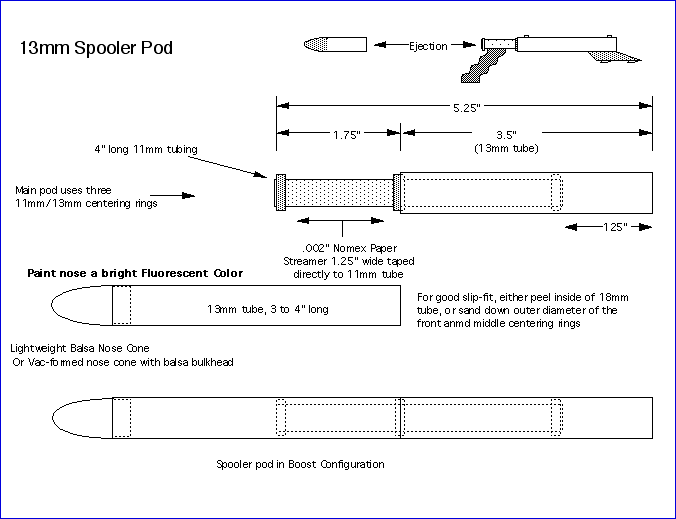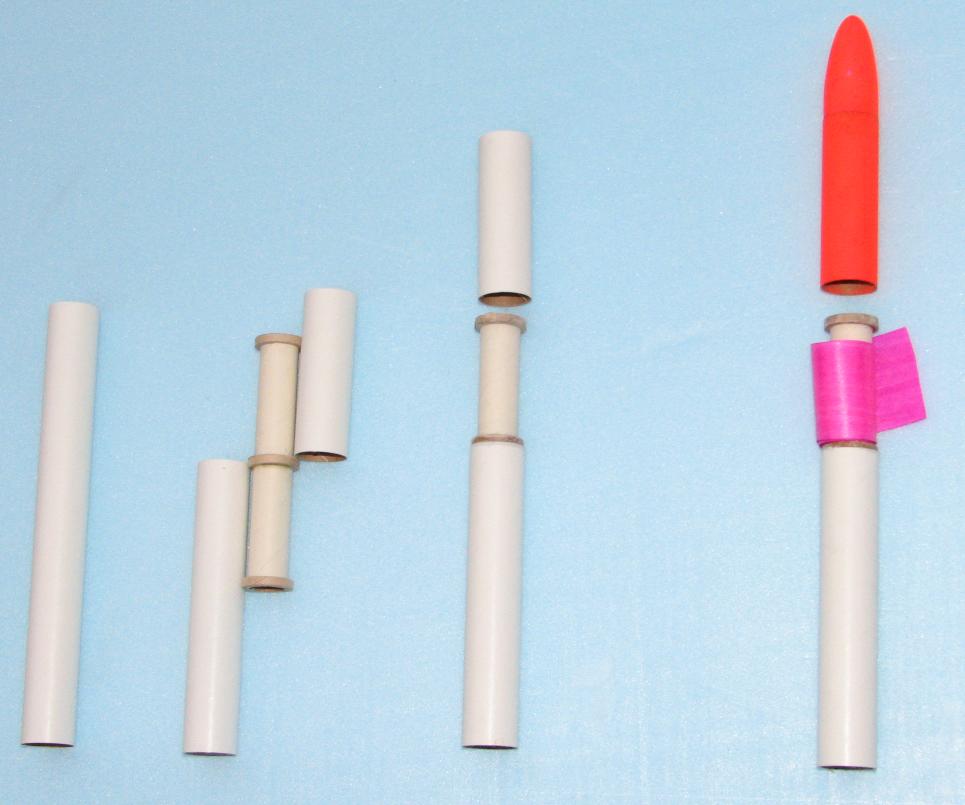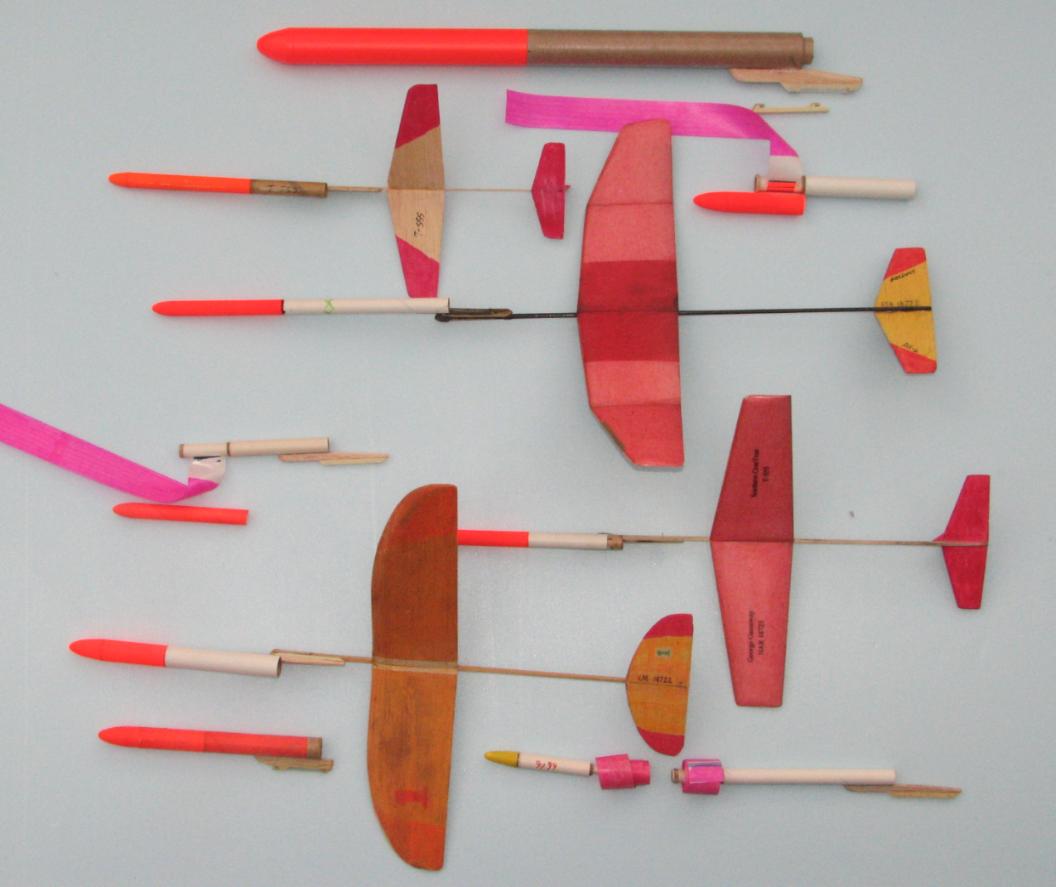Looking at the flight, it doesn't seem any more violent than a catapult glider launch. In that case, a 12 inch glider could probably be made down to 6 grams or so. Such a glider might have a 25 percent lower sink rate. It's hard to say how much lower, because the Reynolds number would be lower, too, making the wing somewhat less efficient.
Catapult gliders would be pretty good for this event, except they wouldn't need to be trimmed for the launch in the same way when launched with a rocket.
I'd guess that a slower burning motor would deliver better altitude for any particular total impulse. Enough to make even a somewhat smaller glider stay up longer.
I built a slightly modified Fliskits Nanite that flew out of sight shortly after I got it trimmed right.
Delta wings were discussed earlier. If really light, they might compete on sink rate, but would have extra drag during launch. They'd be easier for a timer to see, though.
Higher aspect ratios probably won't have better performance for something this small and light, even if you could build them to the same wing loading. As the Reynolds number goes down, the viscosity of the air becomes more important and the L/D of the airfoil declines.













